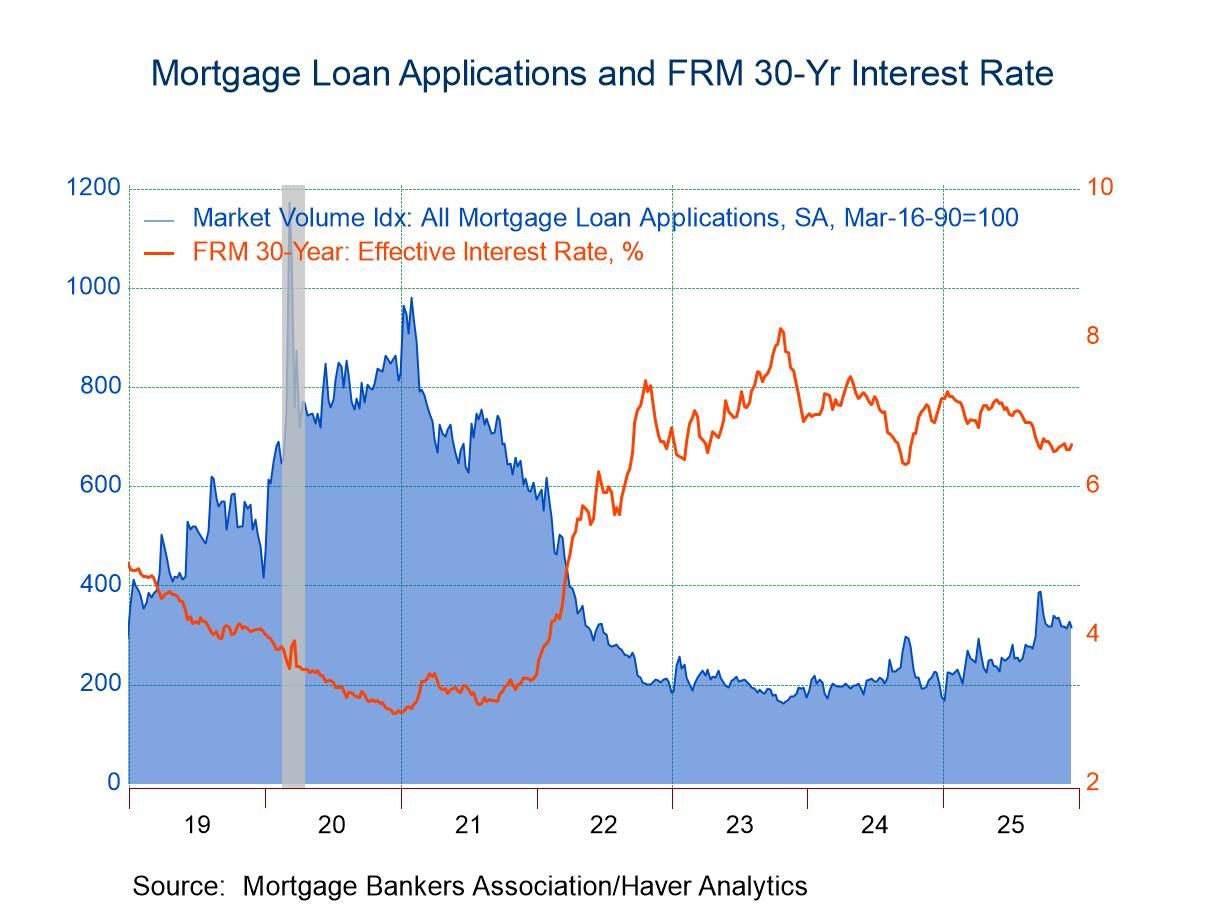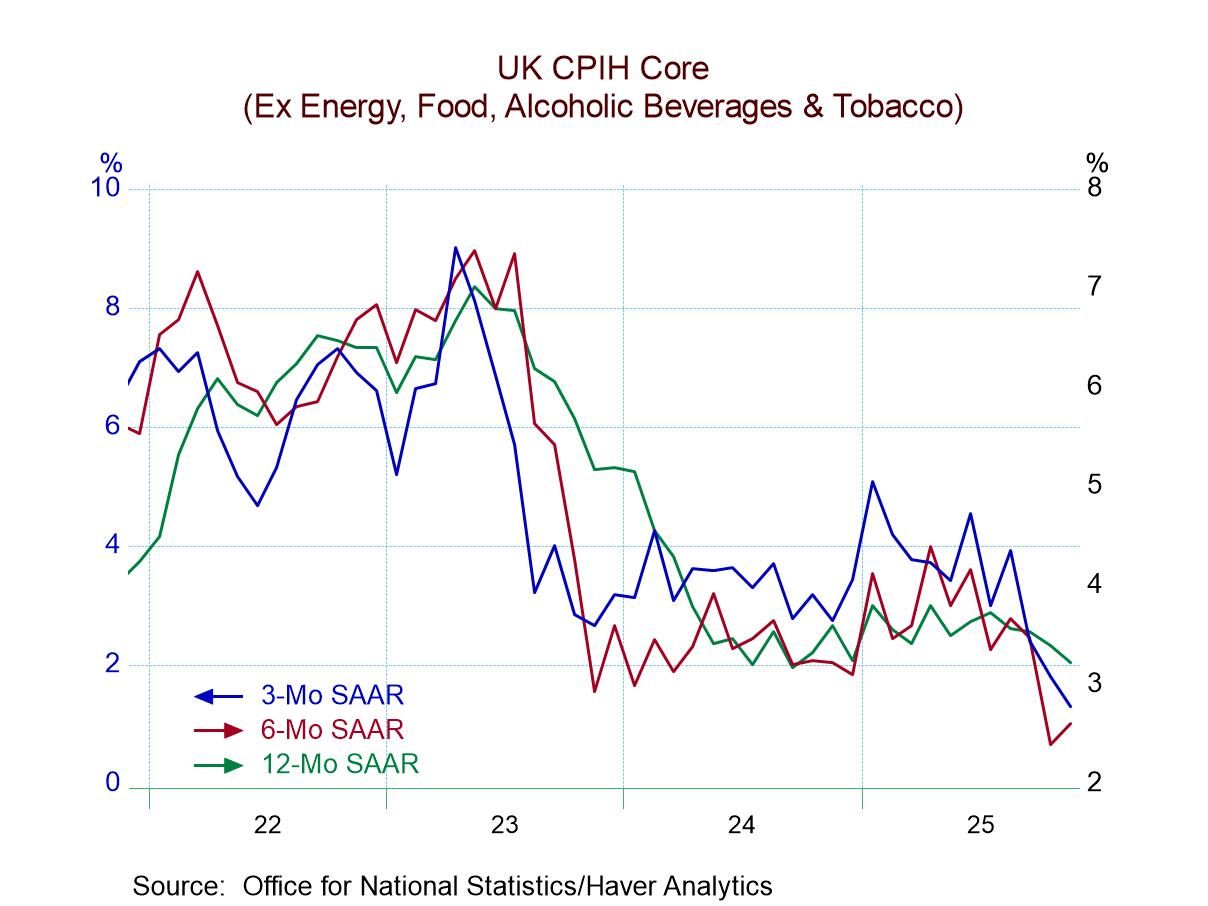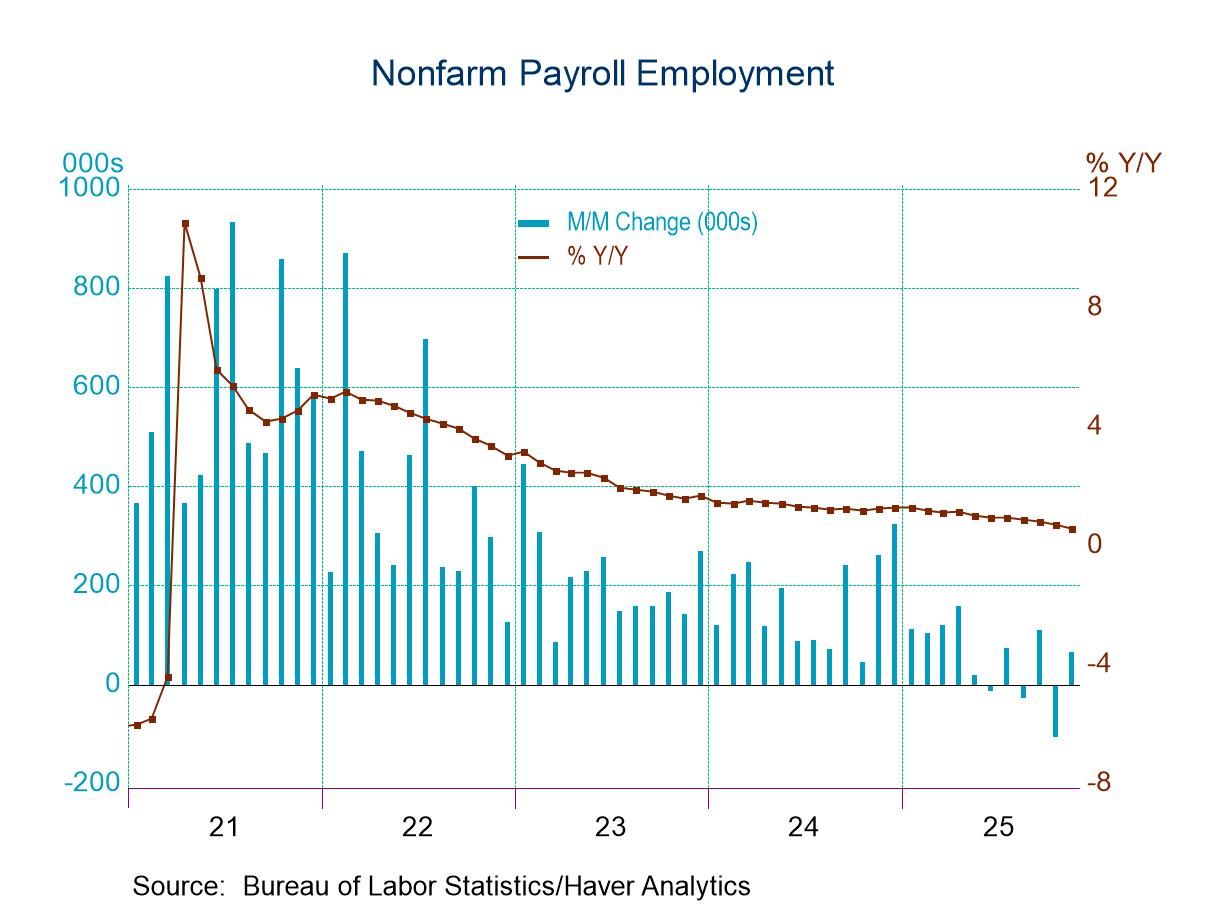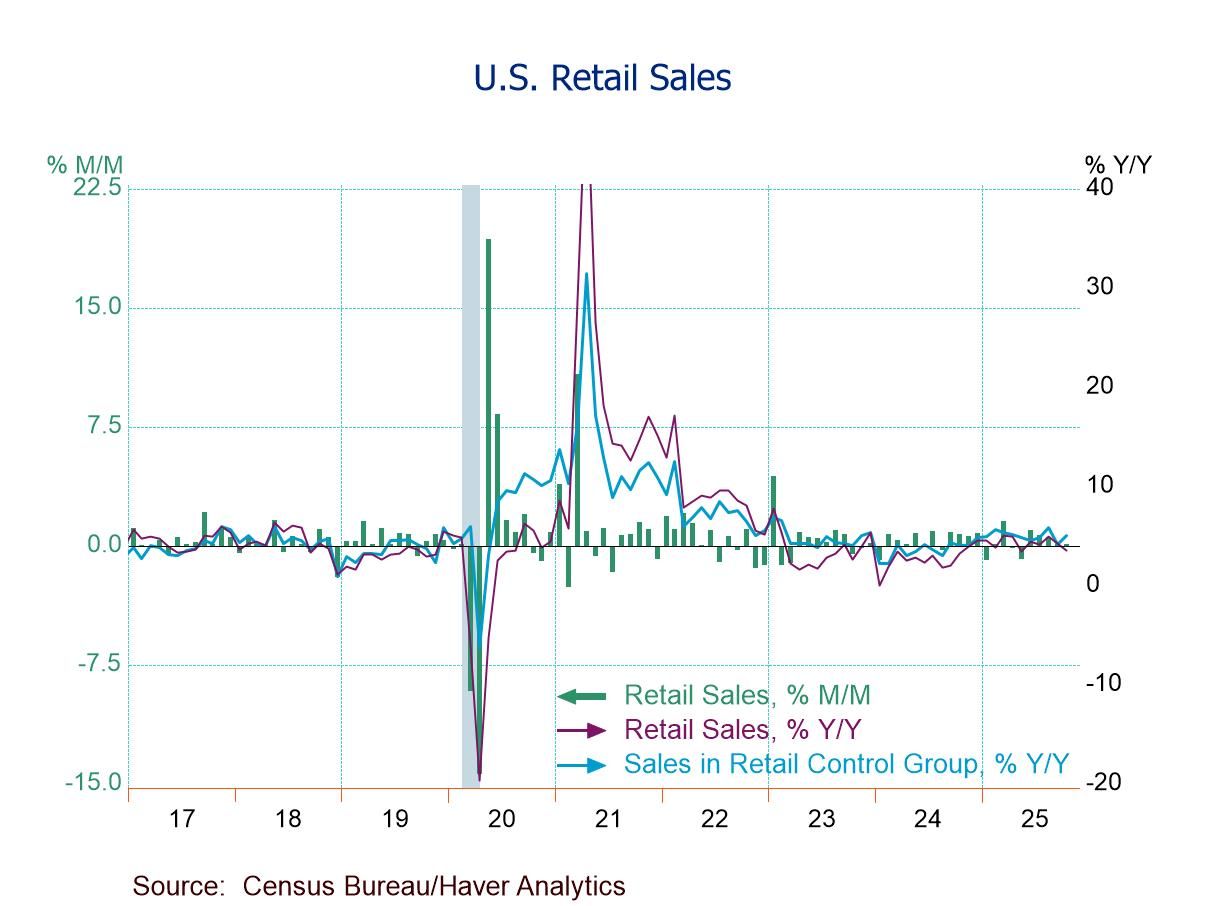U.S. Wholesale Inventories & Sales Decline in May
by:Tom Moeller
|in:Economy in Brief
Summary
- Inventory decline reverses two months of increase.
- Sales decline is first in four months.
- I/S ratio steadies at three-year low.


Wholesale inventories fell 0.3% (+1.4% y/y) during May after edging 0.1% higher in April. The decline was revised from a 0.2% fall in the advance release issued last week. A 0.3% decline had been expected in the Informa Global Markets survey. Durable goods inventories fell 0.8% during May (-0.0% y/y) after increasing 0.1% in April. Furniture & home furnishings inventories were off 2.2% (+4.5% y/y) after weakening 0.8% in April. Professional & business equipment inventories declined 1.7% (+5.1% y/y) and reversed April’s 1.6% increase. Motor vehicle & parts inventories were off 1.5% (-2.6% y/y) following a 0.6% rise. Machinery inventories fell 0.8% (-2.0% y/y), about as they did in April. Electrical equipment inventories eased 0.1% (-3.2% y/y) after falling 0.5% in April. To the upside, hardware & plumbing equipment inventories rose 1.3% (8.1% y/y) following two straight 1.8% increases. Lumber inventories rose 1.0% (3.4% y/y) after falling sharply in both of the prior two months. Inventories of nondurable goods rose 0.5% during May (3.9% y/y) after rising 0.2% in April. Drug inventories surged 1.8% (5.1% y/y) after a 2.0% gain while apparel inventories gained 0.5% (-0.7% y/y) following a 0.9% rise. Grocery inventories rose 0.3% (11.0% y/y) after a 1.2% rise. Paper inventories rose 0.3% (6.9% y/y), reversing the 0.7% April decline, while chemical inventories dropped 1.9% (-1.8% y/y) after declining 1.2% in April. Petroleum & petroleum product inventories rose 2.5% (-8.1% y/y) following a 7.5% drop. Farm product inventories declined 3.8% (4.9% y/y) after two straight months of 2.6% decline.
Wholesale sales declined 0.3% (+4.8% y/y) in May after holding steady in April. A 0.2% increase had been expected in the Action Economics Forecast Survey. Sales of nondurable goods declined 0.8% (+2.3% y/y) after easing 0.1% in April. Paper sales slipped 0.8% (0.7% y/y) after rising 0.9% in April. Drug sales eased 0.3% (+12.0% y/y) after rising 0.2% in April. Petroleum sales weakened 2.8% (-13.3% y/y) after declining 3.3% in April. In contrast, sales of apparel strengthened 1.9% (8.1% y/y), the same as in April. Grocery store sales increased 1.0% (6.7% y/y) after a 1.4% gain. Sales of durable goods rose 0.2% (7.6% y/y) following a 0.1% uptick in April. Auto sales rose 3.6% (5.2% y/y) after easing 0.1% in April. Sales of electrical equipment strengthened 1.2% (15.7% y/y) following a 0.4% decline. Metals & minerals sales gained 0.5% (0.2% y/y) following a 1.8% decline. Working lower, furniture sales declined 1.6% (+3.6% y/y) after a 2.3% increase. Professional equipment sales eased 0.3% (+8.1% y/y) following a 1.0% increase. Machinery sales weakened 0.9% (+5.2% y/y) after increasing 0.8% in April.
The May inventory to sales ratio in the wholesale sector stood at 1.3 for the fourth straight month. The durable goods I/S ratio eased to 1.67 after two months at 1.69, down from the 1.81 high in March of last year. The ratio ranged from a 2.86 high for machinery to 0.95 for electrical equipment. The nondurable goods I/S ratio rose to 0.95 after two months at 0.93. The I/S ratio for apparel was 2.04 in May while for petroleum, it was 0.33.
The wholesale trade figures are available in Haver's USECON database. The expectations figure for inventories is contained in the MMSAMER database. Expectations for sales are from the AS1REPNA database.
The minutes of the latest FOMC meeting can be found here.


Tom Moeller
AuthorMore in Author Profile »Prior to joining Haver Analytics in 2000, Mr. Moeller worked as the Economist at Chancellor Capital Management from 1985 to 1999. There, he developed comprehensive economic forecasts and interpreted economic data for equity and fixed income portfolio managers. Also at Chancellor, Mr. Moeller worked as an equity analyst and was responsible for researching and rating companies in the economically sensitive automobile and housing industries for investment in Chancellor’s equity portfolio. Prior to joining Chancellor, Mr. Moeller was an Economist at Citibank from 1979 to 1984. He also analyzed pricing behavior in the metals industry for the Council on Wage and Price Stability in Washington, D.C. In 1999, Mr. Moeller received the award for most accurate forecast from the Forecasters' Club of New York. From 1990 to 1992 he was President of the New York Association for Business Economists. Mr. Moeller earned an M.B.A. in Finance from Fordham University, where he graduated in 1987. He holds a Bachelor of Arts in Economics from George Washington University.






